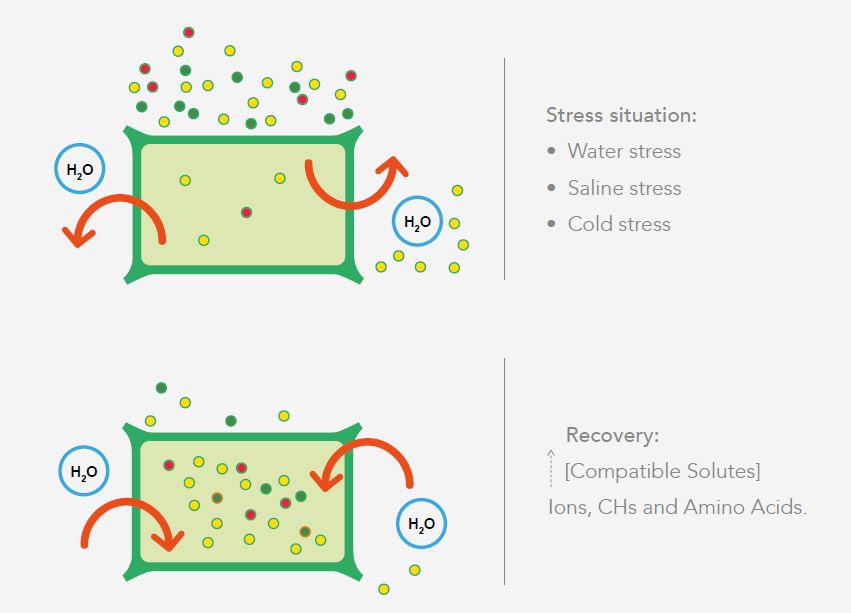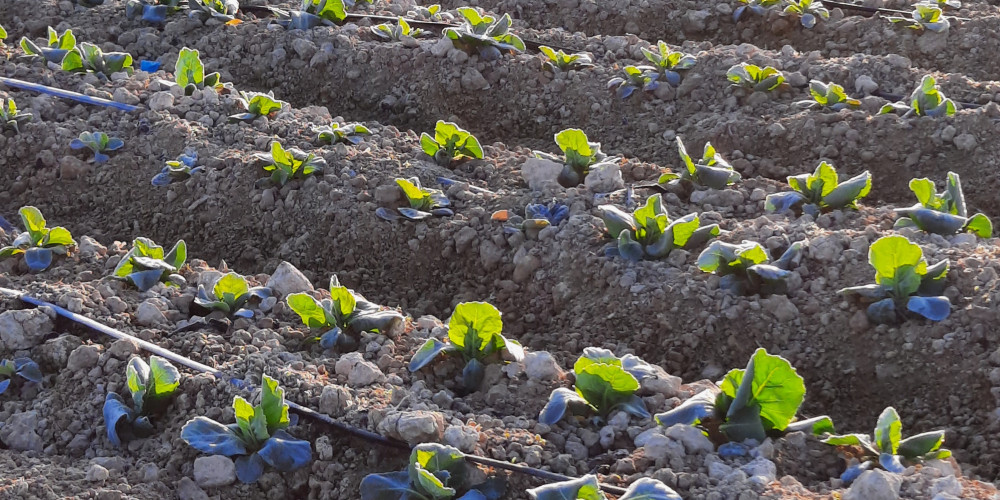Physiology of cold and frost-related stress
Tuesday, 01 February 2022
Terra-Sorb® | Applied Knowledge
Being able to adapt to cold environments and preventing damage or death in plants at low temperatures, is of enormous financial significance for numerous crops in warm or temperate climates.
Low temperature stress can be divided into two types:
- Cold stress: when temperatures are too low for the plant’s metabolism to work properly, but where the temperatures do not drop low enough to form ice crystals within the cell.
- Freeze-frost stress: when the temperature drop is severe and ice crystals form at cell level.
Cold stress mainly affects two key factors: cell membranes and enzyme activity. Firstly, the cold causes cell membranes to lose fluidity, meaning they become more rigid. Consequently, their permeability decreases and the flow of solutes and water through them is affected. This directly affects the transport of water and nutrients throughout the plant. We also know that temperature directly affects enzyme activity. A drop in temperature can slow down or stop enzyme activity and, therefore, many energy-generating metabolic pathways are interrupted. For example, at mitochondrial level, cellular respiration decreases and, at the chloroplast level, photosynthesis decreases.
As regards the effects of freezing, plants suffer not only from the effects of cold temperatures, but also from other complications. Their ability to survive freezing temperatures will depend on several factors. First, freezing always starts at the level of the xylem content and depends on the concentration of solutes in the woody vessels. If the solution in the woody vessels is very diluted and has few solutes, then freezing is rapid. If, on the other hand, the solution is less diluted, then there is a higher concentration of compatible solutes such as amino acids, carbohydrates, and ions in general, and the plant or tree is more resistant, and freezing is slowed down.
If the xylem freezes at any point, the water column from the roots to the leaves is interrupted. If the next day is sunny and the stomata open (the plant transpires), then water and nutrients in solution cannot reach the leaves, which then die through desiccation.
What has to happen for the xylem solution to freeze?
With regard to the dilution of the solution: the more solutes it contains (including the most important: amino acids, carbohydrates, etc.), the more resistant it will be to freezing. It is therefore important to maintain a good nutritional balance in the tree and provide it with Terra-Sorb® (L-α-amino acids), so that the tree can be ready in the event there is a risk of frost.
At the cellular level, two things can happen, depending on the severity of the temperature drop. When there is a risk of freezing, ice crystals may form in the extracellular spaces. This freezing of the extracellular solution creates a potential gradient for the water in the cell that leads to an outflow of water from the cytoplasm to the exterior. So cellular dehydration occurs because the ice crystals outside the cell cause the solution outside the cell to be more concentrated than inside the cell and therefore the water travels in this direction, always from a lower to a higher concentration, this is osmotic potential.
Plants do not die from the cold itself, but from the dehydration it causes, basically due to the lack of solutes retained in the water that make it circulate properly throughout the tree.
If ice forms even inside the cell, then this is fatal as the ice crystals act like knives tearing the membranes of cell organelles. Cell necrosis occurs.
There are several mechanisms that can be put into motion to lessen the damage caused by a cold stress situation, to prevent the loss of membrane fluidity, and to increase the plant's resistance to cold. For example, cells begin to synthesize amino acids and other compatible solutes, and these begin to accumulate in the cytoplasm creating an osmotic effect. Several specific proteins with anti-freezing properties are also stimulated, as is the production of antioxidants.
What is the relationship between L-α-amino acids and cold tolerance?
The amino acids that are synthesized prevent water loss from the cells when there is frost. The accumulation of amino acids in cell cytoplasm acts by osmosis, creating a higher concentration of solutes inside the cell compared with the outside, and this is despite the ice crystals. In this way, the direction of the water is reversed and the water is retained in the cell preventing it from dehydrating.
Amino acids such as proline are also known to help stabilize cell membranes by interacting with membrane phospholipids. Amino acids prevent ice from spreading on membranes and keep them functional.
In addition, as we know, amino acids are protein precursors, and obviously among these are those that are synthesized at this time of stress.
What is the purpose of applying Terra-Sorb® products?
- The aim is to mimic the plant’s defence mechanisms by exogenously supplying high quality amino acids to help crops overcome low temperature stress.
- In addition, this exogenous supply represents an energy saving for the plant and a greater tolerance to cold is achieved.

What are the differences between black and white frost?
The phenomenon known as frost is a big problem for farmers everywhere in the world, especially when this frost occurs in spring. Frosts can be broadly classified as “white” and “black”, the latter being the most dangerous.
White frost occurs with cold and humidity. When the temperature is below 0°C and there is sufficient humidity in the environment (above 60%), ice appears in the form of small crystals that adhere to any plant surface, giving them a whitish appearance. These frosts are not usually harmful to the field and protect the internal part of the plants, as the ice acts as a protector.
Black frost occurs when the temperature drops below 0°C but no frost forms. This happens because the air is so dry that the temperature does not equal the dew temperature and therefore no condensation or frost formation occurs. Overcast or semi-overcast skies and turbulence in the lower layers of the atmosphere favour the formation of this type of frost. These black frosts are feared in the field because of the damage they cause, as ice crystals form inside plant cells. All this translates into plant tissues such as leaves or young stems suddenly taking on a blackened appearance, and the whole plant may die if the damage affects vital parts.
Depending on our crop and variety, spring frosts affect us with varying degrees of intensity. In some cases, they can leave us without a harvest, while in others they hardly affect production.
If you want to know more about how climatic factors affect crops, click here.

